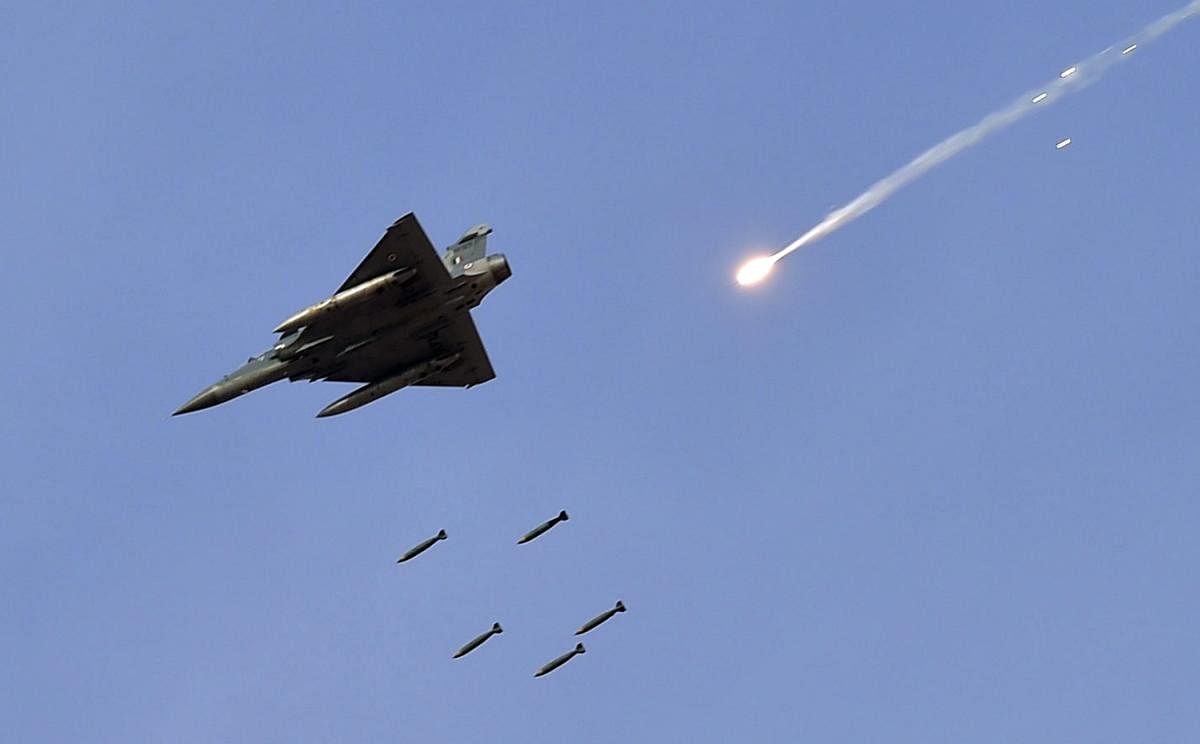Airpower advocates have long posited it as the most flexible tool in a country’s military repertoire. It can be a particularly lucrative option for prosecuting targets in geographies that don’t have the best air defences out there.
The Balakot strike by the Indian Air Force (IAF) has exposed Pakistan as one such place, thereby also demonstrating that conventional military options do indeed exist for responding to Islamabad’s ‘nuclear-derived terrorism’ strategy. This development is a vindication of the view that airstrikes on specific terrorist targets in territory controlled by Pakistan do not violate any identifiable redlines of that country’s strategic doctrine.
Instead, they impose costs on the Pakistani establishment, which has rather limited military options of its own to respond to such an action, especially since it will be loath to climb the conventional escalatory ladder. After all, Pakistan’s entire strategy revolves around keeping matters at a low ebb. Raising the conventional stakes will mean playing in an arena where India is stronger. Nevertheless, India must remain prepared for minor provocations, since it has struck deep inside Pakistan, not in Pakistan-Occupied Kashmir as in earlier cases of retaliation. Moreover, the Pakistan Air Force (PAF) has clearly suffered a loss of prestige as a result of the air strike.
Post the Pulwama suicide attack, it was amply clear that New Delhi had to do ‘something’ that went beyond the usual. A ground-based operation targeting terror launch pads didn’t seem particularly feasible since the Pakistanis would have been ready for that and had in any case withdrawn their ‘assets’ to the interior.
However, as has now been revealed, they congregated a sizeable number of these terrorist elements at a single location in the vicinity of Balakot in Mansehra district of Khyber Pakhtunkhwa, thinking they would be safe from an Indian onslaught that deep within Pakistani territory. This proved to be a mistake since precision airpower is particularly effective against concentrated targets for which timely intelligence is available, not least because it can respond at short notice.
Once identified, reaching the target itself would have required negotiating Pakistani air defences, which have now been exposed as ordinary at best. While the PAF has a decent-sized order of battle (ORBAT) on paper, barring the more recent JF-17s and older F-16s, its inventory is mostly made up of second-hand jets of dubious serviceability.
In any case, the PAF is quite reliant on fighters to provide air defence cover and lacks serious ground-based air defence systems, a weakness that has been exploited by the IAF. India’s conventional superiority over Pakistan is not merely in terms of overall force dispositions but extends to technology as well. The IAF scores over the PAF in the realm of electronic warfare and this is precisely why the former’s combat aircraft could make it all the way to Balakot unmolested.
Limited options for Pak
Indian conventional superiority also means that Pakistan has limited military options to respond to the Balakot airstrike, which has probably resulted in over 300 terrorist casualties. Though Islamabad has claimed that it will retaliate at a ‘time and place’ of its choosing, it is unlikely to be able to easily zero in on a calibrated response that does not lead to conventional escalation by India.
Such an escalation is exactly what the Pakistani military has sought to avoid all these years by making incessant nuclear threats to prevent its irregular warfare from leading to a significant conventional conflict. But that boat has now sailed, and Pakistan may end up receiving severe punishment along the conventional escalatory ladder before its losses bring matters to a point where its threat to carry out a nuclear strike begins to be credible. Especially at a time when its economy is in such poor shape.
Of course, using terrorist proxies to target a civilian centre in the Indian hinterland is something that Pakistan is well-versed in. But a terrorist strike in a major Indian city will lead to further Indian airstrikes and once again bring the same dynamics into play that Pakistan would like to avoid. There can be no doubt that the Balakot airstrike has sent a clear message across to Islamabad (and Rawalpindi). Pakistan has been caught on the wrong foot for the first time in years.
To recover lost prestige, the Pakistani military may nevertheless precipitate minor actions in sectors where it is more confident of its posture, but it may suffer losses in trying to do so. The PAF, for one, will almost certainly lose aircraft in any action against India. As such, a general escalation is unlikely. On the other hand, there is always the option of denying that India had actually accomplished anything via this action and use that as an excuse for inaction on Pakistan’s part. India’s careful post-airstrike statement about the target being ‘non-military’ has kept the door open for that.
The use of the term ‘non-military’ is interesting in itself, because it necessarily does not mean ‘civilian’ either. Rather, in the context of Pakistan, it can be interpreted as ‘deniable’ or ‘expendable’. For once, Pakistan is finding that hosting such ‘deniables’ on its soil for eventual export to India isn’t without consequences. But if such exports have to be curtailed because of the imposition of new costs, what will happen within Pakistan itself?
(The writer is Chief Editor, Delhi Defence Review)
